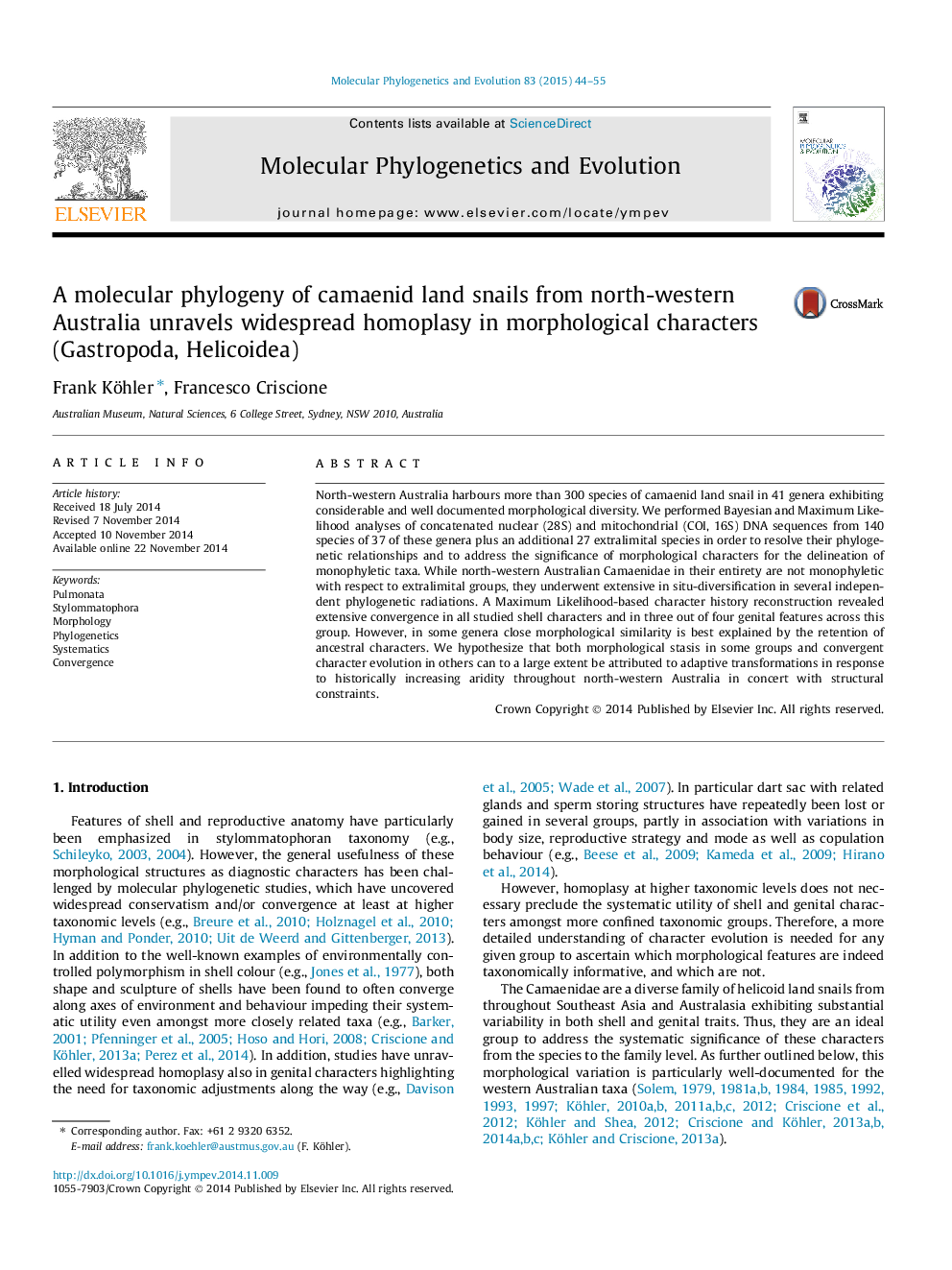| Article ID | Journal | Published Year | Pages | File Type |
|---|---|---|---|---|
| 5919064 | Molecular Phylogenetics and Evolution | 2015 | 12 Pages |
â¢Camaenidae land snails diversified extensively in north-western Australia.â¢West Kimberley and East Kimberley - Victoria regions harbour distinct radiations.â¢Top End - Arnhem Land harbours few species from phylogenetically old lineages.â¢Rampant convergence in shell and genital characters has been found.â¢Convergent evolution may be influenced by Neogene aridification.
North-western Australia harbours more than 300 species of camaenid land snail in 41 genera exhibiting considerable and well documented morphological diversity. We performed Bayesian and Maximum Likelihood analyses of concatenated nuclear (28S) and mitochondrial (COI, 16S) DNA sequences from 140 species of 37 of these genera plus an additional 27 extralimital species in order to resolve their phylogenetic relationships and to address the significance of morphological characters for the delineation of monophyletic taxa. While north-western Australian Camaenidae in their entirety are not monophyletic with respect to extralimital groups, they underwent extensive in situ-diversification in several independent phylogenetic radiations. A Maximum Likelihood-based character history reconstruction revealed extensive convergence in all studied shell characters and in three out of four genital features across this group. However, in some genera close morphological similarity is best explained by the retention of ancestral characters. We hypothesize that both morphological stasis in some groups and convergent character evolution in others can to a large extent be attributed to adaptive transformations in response to historically increasing aridity throughout north-western Australia in concert with structural constraints.
Graphical abstractDownload full-size image
